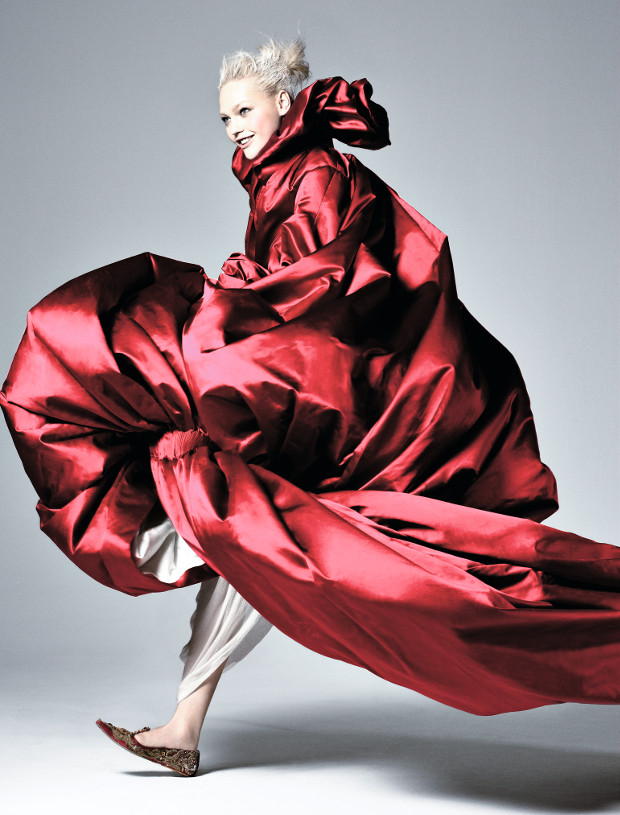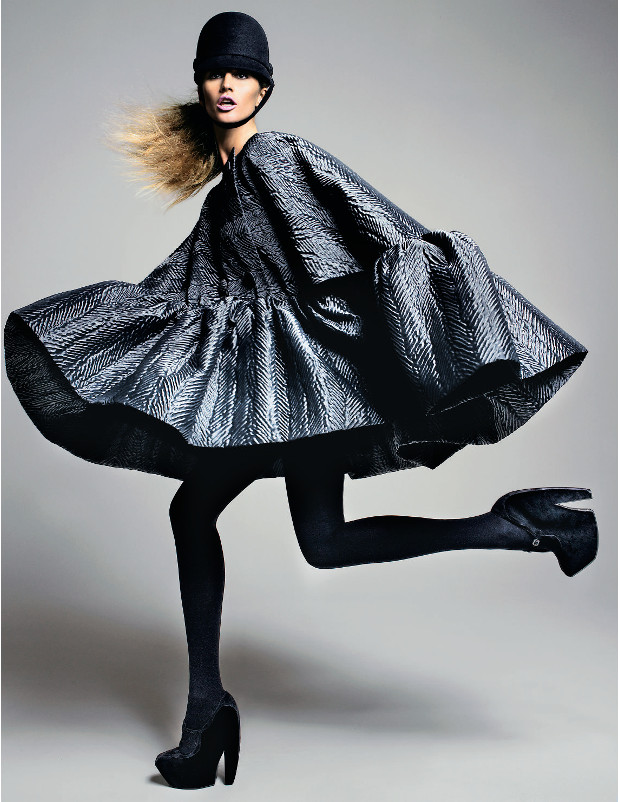
Grace's greatest photographers – David Sims
In honour of the publication of Saving Grace: My Fashion Archive 1968-2016, Vogue's Grace Coddington recalls some of her favourite photographers, including the Nineties minimalist who reminded her of David Bailey
Grace Coddington came of age in Swinging London, and can remember when photographers such as David Bailey and Terrance Donovan were changing fashion magazines.
Over the following three decades Coddington became one of the most powerful figures within the fashion industry, overseeing creative direction first at British Vogue then at US Vogue. However, she kept an eye on the fashion industry's younger talents, and when, in the 1990s, a new breed of British image makers began to make their way through, she started to pay close attention to one in particular.
“David Sims first caught my eye in the early 1990s,” says Grace in our new book Grace: The American Vogue Years, which forms part of new luxury edition boxset, Saving Grace: My Fashion Archive 1968-2016. “He was one of the new band of photographers signed up by my friend Liz Tilberis, the freshly appointed editor in chief of Harper’s Bazaar. Everyone was taking note of the radical changes she was making to the magazine. In particular, they talked about the influx of young photographers - Craig McDean, David, and Mario Sorrenti -with their cool, new attitude. I, too, found this interesting and not, in fact, dissimilar to the impression that young photographers such as David Bailey, Terence Donovan, and Brian Duffy made on 1960s London."
Despite these '60s similarities, there was something undeniably new about Sims’ photography. His pictures a newfound appreciation within fashion circles for something approaching minimalism.

“David has no interest in the superfluous and is instinctively inclined to strip down a fashion photograph to its minimum, leaving only what is strictly necessary, such as volume and silhouette,” Grace explains. “His pictures convey a sort of refined formality. His model is a woman with attitude. She has a realness about her and possesses a strong, boyish look. He is not too keen on accessories, although, strangely enough, he goes to great pains to show the shoes. This, of course, leaves me feeling extremely happy because, in my opinion, the shoes are all-important. They define the look and ground the picture."
All that carefully sleek simplicity is hard to achieve on location, yet, Grace managed to convince Sims to take to the road with her, shooting wonderful fashion stories in surprisingly chaotic settings.
“When I began working with David, he was known to prefer shooting in the studio, where he had absolute control,” Grace explains. “After several seasons of backdrops, white through gray, he agreed to photograph the couture in a beautiful hôtel particulier.
"It was the year I was being followed by the director R. J. Cutler and his team filming The September Issue, and, much to my amusement, they arrived on our set (glimpses of which appear in the movie) while our model Raquel Zimmermann was stuffing herself with a plate of rich, creamy cakes. Since that moment, getting David to work outside has been less of a challenge. For a story in the mood of Vita Sackville-West, he at first seemed awkward in the lovely formal garden we had booked. Then, just beyond it, he spied a meadow filled with wild poppies. He loved it. After shooting just one picture there, however, he moved on to the even simpler setting of an empty field beyond.”